SOUTH ROUTE: BAKU — SALYAN — BILASUVAR — JALILABAD — MASALLI — LANKARAN — LERIK-ASTARA
SALYAN

SALYAN district is located in the south-east of Azerbaijan, LANKARAN-ASTARA region inhabited since ancient times, distinguished by unique cultural and historical traditions, unique plant world, long-lived inhabitants, unique cuisine with fish dishes.
Salyan region is in some sense the Gateway of this region — the transport arteries of the Republic, the highways and railways linking Azerbaijan to its southern regions, as well as the countries of the Middle East are located here.
In very ancient times, various tribes settled here, in the ancient times they replaced each other and became one of the components of the ethnogenesis of the Azerbaijani people. One of these tribes was called "sal". The city of Salyan also got its name from this word.
One of the main rivers of the Republic — Kur river flows through the territory of Salyan region. The eastern part of the region joins the shores of the Caspian Sea. Its location close to the sea and river conditioned the features of the National kitchen of the inhabitants of this area.
"Shirvan" national state park is located here (in 2003 the reserve of the same name was reorganized and turned into a national park). The Reserve itself was established in 1969 in order to preserve and propagate the typical plant complex of Shirvan lowland (the territory distinguished by semi-desert and wet-swamp ecosystem). "BANDOVAN" reserve located here was established in 1961. The reserve covers an area of 30 thousand hectares and occupies part of the territories of two administrative districts — Salyan and Garadagh. The Reserve was organized to protect gazelles and waterfowl and restore the number of heads.
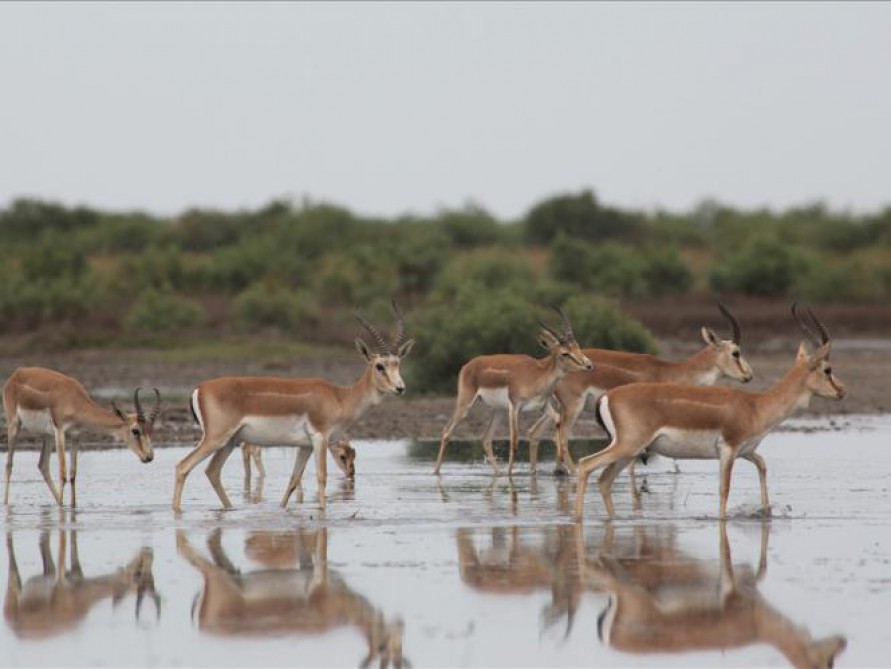
This region is also interesting from the point of view of archeology and preserved historical and architectural monuments. A number of objects related to the Middle Ages were discovered here in 70-80s of XX century.
There are a number of archaeological sites in this region covering the period from the Bronze Age to the early Middle Ages. Among them, the marimli Necropolis, the necropolis of pitcher graves in kursengi village, the ruins of ancient human settlements in the villages of present NOKHUDLU and MAHMUDABAD should be particularly noted.
At a distance of 5 km from the district center, one of the numerous mud volcanoes of Azerbaijan is BABAZANAN volcano. The healing properties of mud erupted from this volcano still attract local residents.
There is another mud volcano near the Sea coast in the area called DASHGIL, which is less than reaching salyan. The dashgil Reserve is also located here. It is a suitable place to hunt waterfowl, caspian kutum, carp and other fish species living in the Caspian Sea.
SALYAN city, the administrative center of Salyan district, is 126 km from Baku. The ancient mosque belonging to XIX century here is an architectural monument guarded by the state. At present, travelers and tourists coming here can use the services of a modern caravanserai. Here you can taste the dishes of the local ancient Azerbaijani cuisine.
Visitors to Salyan can stay at “Kur” hotel located in Salyan city.
BILASUVAR
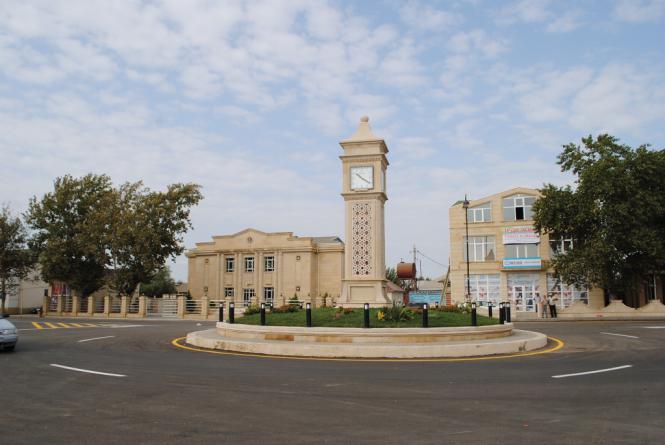
BILASUVAR district borders on Iran in the West. The climate here is semi-desert and dry desert climate. Features of climatic conditions have developed here cotton-growing, grain-growing and cattle-breeding. According to one hypothesis, the name of this region is connected with the search for water - the meaning of the word "Bilasuvar" means "there is water here". Another version is that this name is associated with the presence of people who managed to find water in the desert. According to this version, "Bilasuvar" means a person who knows where to get water.
As in the whole territory of Azerbaijan, the territory of Bilasuvar district has been a human settlement since the earliest times. This is confirmed by numerous archaeological finds and remains of architectural monuments discovered in the region. CHOL AGHDAM, ICHERI AGHDAM, TORAGAYLI belong to ancient times and early Middle Ages. Unfortunately, most of these archaeological objects have not yet been studied.
BILASUVAR is a small town. It is located 182 km from Baku. Visitors to the city can stay at”Zirve Hotel".
JALILABAD
JALILABAD region is located on the border of Kur-Araz lowland. The climatic zones here begin with a temperate hot climate where precipitation is distributed almost regularly, ranging from semi-desert and dry steppe climates typical of summer drought. The rivers INCACHAY, BULGARCHAY, MISHARCHAY, GOYTAPACHAY flow from the territory of this region. The intensive development of viticulture in this region is associated with the climatic and relief features of the region. The territory of Jalilabad district is a great place for hunting. Approximately 14.7 thousand hectares are covered with forests. In the hunting farm "ZAVVAR" you can hunt water birds. The fauna of the region was represented by wolves, rabbits, badgers, boars, foxes, wild ducks, geese, eagles, turaj and other creatures.

The administrative center of Jalilabad district - JALILABAD city is located 208 km from Baku. Archaeologists have discovered an ancient city called HAMSHAHRATAPA on the outskirts of this city and carried out excavations there. As a result of excavation, objects of material culture of the Eneolithic period were found. According to scientists, in the early Zoroastrianism, one of the ARI tribes - the famous tribe of mags-lived here. Representatives of the tribe of mags, according to tradition, became priests of this ancient religion and joined the ranks of its supreme priests caste. They have mastered the secrets of Medicine and Zoroastrian Astrology. These people were so skillful that over time, the name of that tribe became a special name and fell into the form of "Magic". In the small hills of HAMSHAHRATAPA, there were found products for making KHAOMA, which is considered a pre-Zoroastrian drink, for household items and religion of Zoroastrianism.
Numerous burial mounds, urban areas, human settlements and necropolises were found in the territory of the region. The period of their creation covers the time period from the Bronze Age to the early Middle Ages.
The city was originally called KHASILI. Then, his name was changed to ASTRAKHANBAZAR. The present name of the city was given in honor of JALIL MAMMADGULUZADE, founder and irreplaceable editor-in-chief of "MOLLA Nasreddin" magazine, the first satirical journal in the East.
There is a small museum of local lore, a park and a hotel in JALILABAD.
MASALLI
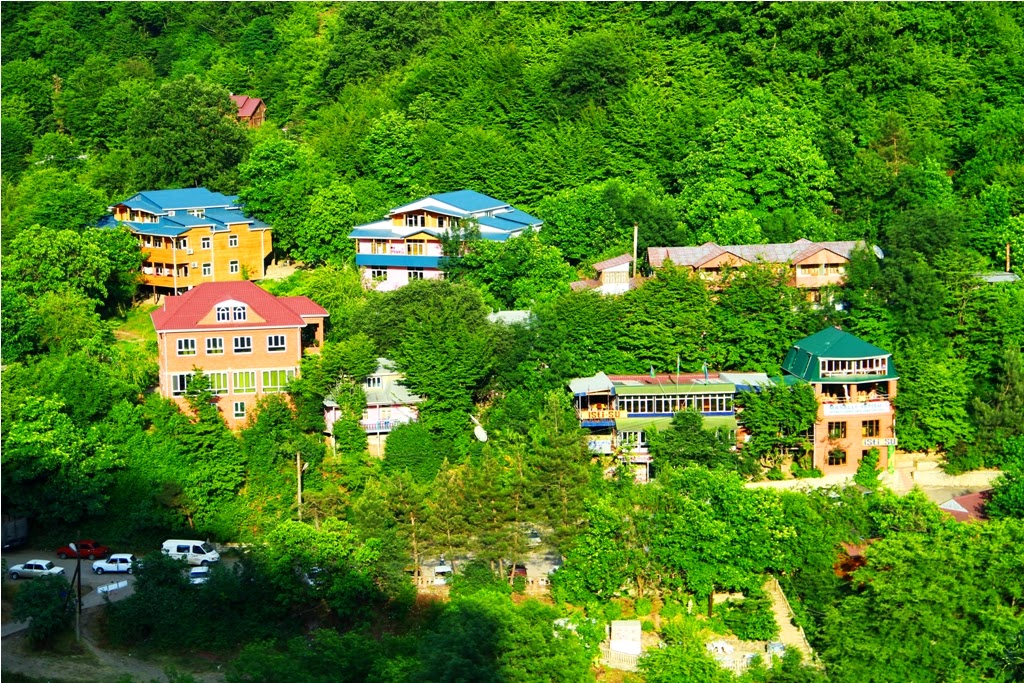
MASALLI district is located on the main transport artery of this region - the main road from the capital of Azerbaijan to the south, towards Iran. One of the borders of the region is the coast of the Caspian Sea and the other is the Talysh mountains. VILASH, ALVADICHAY and TATYAN rivers flowing through the region flow into the Caspian Sea.
Masalli region is rich in mineral water springs. Among them are those that are thermally watery, as well as those that are chosen with cold water, such as ice. The water of some Springs contains a lot of sulfur and other microelements. ISTISU mineral spring is located in one of the picturesque mountain corners of the region. The water of this spring has healing properties. There are those who come here to be treated, and those who come to rest. Thermal water falls and suspension bridge give these places special beauty. Istisu, which is a multi-porular healing mineral water, is sold in pharmacies of the country.
MASALLI city, the administrative center of masalli district, is located 230 km from Baku. In the past, A Tribe Called "Masal" lived in these places. This name engraved in the memory of the people conditioned the modern name of the city. In the valley of Masalli there is a small picturesque lake in the forest. This is a favorite place of rest for both local residents and guests of the city.
Historical and architectural monuments in Masalli City are represented by the mosque built in XIX century, ancient bath-house, ARKIVAN tower and the building of the museum of local lore.
Along the road from Masalli to Lankaran, on the south-western coast of the Caspian Sea (GIZILAGAJ Bay) GIZILAGAJ Reserve is located. The territory of this reserve covers the entire water area of the Bay, as well as nearby dry areas. The reserve was established in 1929 with the purpose of protection and reproduction of wetlands and wild birds, protection of water and semi-desert natural complexes which are wintering places for migratory birds. Among the 248 species of birds and 54 species of fish living here are also species included in the Red Book.
LANKARAN

The territory of Lankaran region covers the eastern coast of the Caspian Sea and the entire Lankaran lowland in the part up to Talish mountains. There are many comfortable sandy beaches on the shores of the Caspian Sea here. Humid subtorpic climate, harsh winter conditions, dry and hot summer days and rainy autumn conditions the rich flora and fauna of this region. LENKERANCHAY, VERAPVUL, GUMBASHI, BOLADI rivers flow mainly due to rain water in spring and autumn, in summer they calm down and become noticeably sloping. Therefore, in order to irrigate agricultural plants in this area, Khanbulanchay water reservoir was created.
Lankaran is another important agricultural region of Azerbaijan. Its specific climatic conditions led to the cultivation of subtorpic plants with tea mandarin, persimmon, feijoa and several types of lemon. The famous lankaran tea is not inferior to the classic Indian tea in its quality and aroma.
It is no coincidence that masters of skillful carving grow here. After all, this region is rich in unique tree species, including rare and endemic species. The famous iron tree, propka tree, velvet beech tree, buxus hyrcana pojark tree, silk acacia, oak, eucalyptus and broad-leaved Oak, which are considered the main forest tree of Talysh Mountains, is a kind of symbol of these forests. In addition, many wild fruit trees, medicinal herbs and shrubs grow in Lankaran forests. Therefore, it is not surprising that two reserves and one reserve have been created in the territory of Lankaran district.
"GIZILAGHAJ" Reserve is located in the Gizilaghaj region on the south-western coast of the Caspian Sea. The territory of this reserve covers the entire water area of the greater Gizilagaj Bay, the northern part of the lesser Gizilagaj Bay, as well as nearby parts of the coastal zone. it was created in 1929 for protection and reproduction of wintering and migratory water, wetlands and wild birds. There are 248 species of birds and 54 species of fish here.

HIRKAN Reserve, which covers an area of 21,435 hectares, is also located in this region. In 2004, the Reserve was transformed into HIRKAN National Park. The National park occupies a part of the territory of Astara and Lankaran regions. The small Gizilaghaj reserve (an area of 10.7 thousand hectares) was established in 1978 in order to protect and restore the head number of birds wintering in the Gulf of Gizilaghaj, living in migratory water, wetland and around the water area, as well as rare and under the threat of destruction. This reserve borders directly with Gizilagaj Reserve.
The administrative center of lankaran district is the city of Lankaran. The distance from Baku is 268 km. Favorable geographical position of the city fertile land natural resources have always attracted people here. Lankaran is located in the south-east of the country, on the Bank of the Lankaran River. They think that the city was built here, near the sea, about 300 years ago. Initially, a fortress equipped with guard towers was built, a lighthouse was built. The first name of the city was "LANGARKUNAN". The meaning of this word is anchored parking, which means a port.
The Khan's House, Kichik gala mosque, Guldeste minaret and ancient Haji Mirza Hamam attract the attention with original facade patterns among historical architectural monuments in lankaran. If you visit the Museum of history in the city, you can get acquainted with the history of this land. The building of the museum itself is also very interesting from the architectural point of view. There are many decorative and applied art workshops in the city. There, freckles are engaged in the art of carving on wood, stone and metal. The first performance of the theater in lankaran was in 1850, and the profit from it was fully distributed to the local poor. The glorious military commander-General Hazi Aslanov was born and lived in this city. Now a museum exposition has been opened in the house where he was born.
The city has various high-end hotels and cottages, such as AB QALA, GIZIL TAJ, CAUCASAS SEASIDE, XANBULAN, Khan Lankaran Hotel.
LERIK

One of the most beautiful corners of Azerbaijan, Lerik rayou is located in the lap of Talish mountains. The beautiful nature of this place, the aroma of the forest, mountain air, springs, rivers and fertile soil make the inhabitants of this land long-lived.
This region has its own unique history, which reflects the most interesting moments of the complex history of the whole of Azerbaijan. Numerous cultural and historical monuments proving that this region was inhabited in the Neolithic period remained in Lerik region. For example, there is a stone cave-like Camp, an ancient Gizyurdu settlement located near the mountain village of MISTAN at an altitude of about 2430 m above sea level.
Baba Hasan mausoleum near Conu village, Baba Isa mausoleum in Mondigah village, Khoja Seyid mausoleum in Khanagah village (XIV century), Pir Yusif mausoleum near Kekonu village, Jabir mausoleum on the side of road to Jangamiran village (XII-XIV centuries) and Khalifa Zechariah mausoleum are guarded by local residents and prostrated to old and old trees in the area of those mausoleums. At one time, Aleksan Dumas visited the village of Jangamiran, and later in one of his works he poetically described the fate of one of the women living in this village full of heroism.
The original mosque built in XIX century in the village of Lulakaran remained intact. The storage of aries figures made of stone in a number of villages of the district is also remarkable fact.

As mentioned above, Lerik region is famous as land of long-livers. For example, the resident of this region SHIRALI MUSLUMOV (1812-1975) had an active lifestyle for 163 years and set a world record for longevity. Another resident of the region MAHMUD EYVAZOV (1808-1958) lived for 150 years. Today there are dozens of people living in Lerik who have passed a century of age but have not lost their ability to work.
Carpet-weaving from folk art types, making of various household items from wood, as well as pottery art developed more in the region. The special feature of carpet weaving here is that these carpets are woven not in traditional vertical looms, but in horizontal looms located directly on the floor.
The administrative center of the district is Lerik city. Lerik city with distance of 325 km from Baku is located at the foot of Talysh mountains, in fertile plain area. Here you can go to the museum of history and local lore and look at the memorial in memory of the victims of the Karabakh conflict.
In Lerik it is possible to go to the apartments of local residents, as well as in such popular recreation areas as "Relax Hotel and Resort", "Shelale" and "Meshachi".
ASTARA
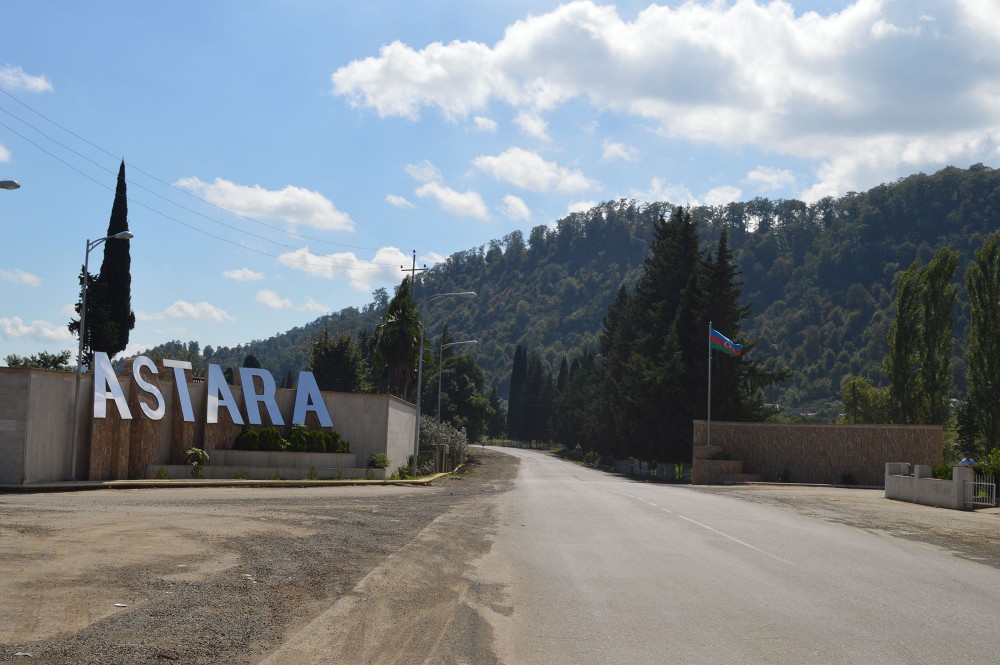
Astara district is located in the south-east of Azerbaijan on the border with Iran. Part of the territory of the region is occupied by Talysh mountains. This is due to the specific climatic conditions of this region.
Area of forests 37. It is about 000 hectares. The rivers Astarachay and Tangerud, originating from the peaks of Talysh, flow into the Caspian Sea. The plant world of Astara is rich and diverse. Wild quince, medlar, hawthorn, blackberry, silk acacia, evergreen coniferous plants, as well as representatives of linanas family grow here. The famous iron tree, which looks at the water because it is very heavy, ends here. From ancient times, local residents made knitting looms from this tree and some details for looms used in the textile industry in modern times.
The flora of the region is also diverse. In Astara forests roe deer, wolves, wild cats, deer and other wild animals live freely. On the shores of the Caspian Sea there are many beaches with clean and clean waters.
Part of Hirkan National Park is located on the territory of this district. This fact attracts environmental tourism lovers to Astara. There are many therapeutic mineral water springs in Istisu area near the Iranian border. Tea-growing and vegetable growing are widely developed in this region. Citrus plants are grown.
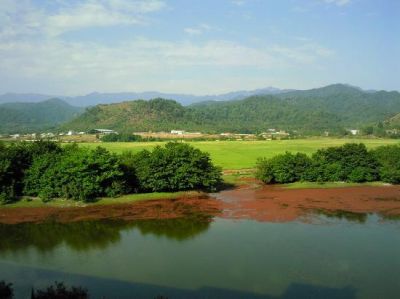
There are numerous (about 400) historical and architectural monuments in the region. It is possible to say that in every village there are traces proving human life from ancient times. For example, in the village of Shindan there is a tower. It is called the tower of Babek among the people. The tower in Nudis village, Meshadi Abutalib bath in Pensar village, Haji Teymur mosque and Haji Jahanbakhish mosque, mausoleum in Shahagaj village, Karbalayi Hamid Abdulla bath in Archivan village are among them. There is a well-known sulphurous spring in this village. When a match is drawn close to the water of this spring, the water gets on. Remains of Castle in the village of Goygol settlement, mausoleum of VII century, caravanserai, stone sculptures of Stone Age and Bronze Age, bridges of XIII century in Siniyapert, Lomin and Pilakan villages still remain.
Astara is the administrative center of Astara district, located 322 km from Baku. Astara, which is an important transit point on the Baku-Tehran highway, is a small border town with the Sea on one side and the Talysh mountains on the other. Paddy fields around the city attract attention. Fishing here is also widely developed - no event was able to change the characteristics of the local national kitchen.
The exposition of the museum of local lore in Astara is quite rich. In addition to ancient coins minted in different periods and confirming the formation of trade in this region in ancient times, a statue of man sculpted from stone is kept in this museum. The age of this statue is more than 2000 years.
Visitors to the district can stay in the apartments of local residents or in the hotel "Espinas Hotel".



